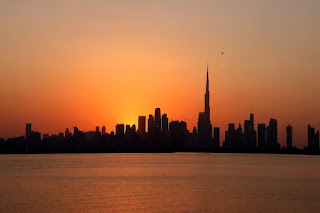compare between hydraulic oil in UAE and Australia
Hydraulic oils in both the UAE and Australia serve the same fundamental purpose transmitting power within hydraulic systems.
However, variations can arise due to regional factors such as climate conditions, specific industrial applications, and brand-specific formulations.
Widely used viscosity grades like ISO 32, 46, and 68 are common across both markets.
Nonetheless, the precise composition, including the type and concentration of performance enhancing additives, may differ to meet local operational demands and regulatory standards.
Detailed Comparison: Viscosity:Both countries use the ISO viscosity grading system (VG).Common grades include ISO 32, 46, and 68, which denote the oil's thickness or resistance to flow.
Temperature:In the UAE, higher temperatures favor the use of thicker oils like ISO 68, while cooler climates might utilize ISO 32 for better flow.Australia also considers temperature, with ISO 68 suitable for warmer regions and ISO 32 for cooler ones.
Equipment:Light-duty systems typically use ISO 32, while heavier machinery like hydraulic presses may require ISO 46 or 68.
Climate:Both countries have diverse climates, influencing the choice of oil grade.In Australia, locations like Darwin might benefit from ISO 68 due to higher temperatures.
UAE Specifics:The UAE market sees a high demand for ISO 46 and 68, with ISO 68 being especially popular for its ability to handle the region's hot climate.
Australia Specifics:Australia uses ISO 32, 46, and 68, with ISO 32 being common for indoor or cooler environments. In Perth, ISO 46 and 68 are well-suited to the climate.
General Guidelines:ISO 32 is thinner and flows more easily, making it suitable for lighter-duty systems or colder temperatures. ISO 68 is thicker and better for higher temperatures and heavier loads.
In essence, while both countries utilize similar ISO grades, the specific choice of hydraulic oil is tailored to the local climate, machinery requirements, and operating conditions.
Detailed Comparison:
Viscosity:
Both countries use the ISO viscosity grading system (VG).
Common grades include ISO 32, 46, and 68, which denote the oil's thickness or resistance to flow.
Temperature:
In the UAE, higher temperatures favor the use of thicker oils like ISO 68, while cooler climates might utilize ISO 32 for better flow.
Australia also considers temperature, with ISO 68 suitable for warmer regions and ISO 32 for cooler ones.
Equipment:
Light-duty systems typically use ISO 32, while heavier machinery like hydraulic presses may require ISO 46 or 68.
Climate:
Both countries have diverse climates, influencing the choice of oil grade.
In Australia, locations like Darwin might benefit from ISO 68 due to higher temperatures.
UAE Specifics:
The UAE market sees a high demand for ISO 46 and 68, with ISO 68 being especially popular for its ability to handle the region's hot climate.
Australia Specifics:
Australia uses ISO 32, 46, and 68, with ISO 32 being common for indoor or cooler environments. In Perth, ISO 46 and 68 are well-suited to the climate.
General Guidelines:
ISO 32 is thinner and flows more easily, making it suitable for lighter-duty systems or colder temperatures. ISO 68 is thicker and better for higher temperatures and heavier loads.
In essence, while both countries utilize similar ISO grades, the specific choice of hydraulic oil is tailored to the local climate, machinery requirements, and operating conditions.
Here is the leading companies in UAE and Australia in the field of manufacturing engine oils and lubricants:





Comments
Post a Comment